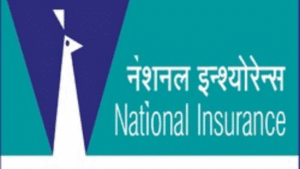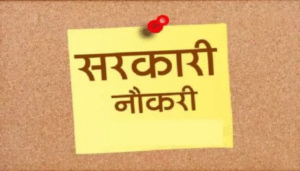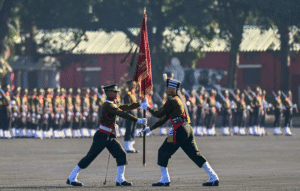Navigating the Labyrinth: Understanding the “Sarkari Naukri” Ecosystem in India
For millions in India, “Sarkari Naukri“—government job—is more than just employment; it’s a dream, a symbol of security, prestige, and societal respect. However, beneath this broad umbrella lies a vast and intricate ecosystem, a labyrinth of diverse examinations, hierarchical structures, and distinct roles. Understanding this complex landscape is the first, crucial step for any aspirant hoping to carve their niche in the public sector.

The Apex: Union Public Service Commission (UPSC)
At the pinnacle of this system lies the Union Public Service Commission (UPSC), revered for conducting the highly coveted Civil Services Examination (CSE). This examination is the gateway to All India Services like the Indian Administrative Service (IAS), Indian Police Service (IPS), Indian Foreign Service (IFS), and a multitude of Central Services Group ‘A’ posts. These roles are characterized by their policy-making influence, administrative leadership, and pan-India jurisdiction. An IAS officer, for instance, might serve as a District Collector, shaping local governance, or ascend to the highest echelons of central ministries. The hierarchy within UPSC-led services is largely merit-based, with promotions linked to seniority, performance, and further examinations or training. Their work often involves extensive travel, public interaction, and the responsibility of implementing government policies on a national scale.
The Backbone: Staff Selection Commission (SSC)
Parallel to the UPSC, but focusing on recruitment for a broad spectrum of Group ‘B’ and ‘C’ posts in various Central Government Ministries and Departments, is the Staff Selection Commission (SSC). The SSC Combined Graduate Level (CGL) Examination is perhaps its most popular offering, leading to roles such as Assistant Section Officer, Income Tax Inspector, and Auditor. These positions are often desk-based, involving administrative, accounting, or investigative work within specific government departments. While their influence might be localized to their department, SSC recruits form the backbone of the central government machinery, ensuring smooth day-to-day operations. The hierarchical progression here is generally slower than UPSC services, often involving departmental examinations and seniority for promotions.
The Financial Front: Banking Sector Recruitment
Beyond these central bodies, the banking sector offers another significant avenue for government job aspirants. Public Sector Banks (PSBs) like SBI, PNB, and Bank of Baroda recruit through exams conducted by the Institute of Banking Personnel Selection (IBPS) for roles like Probationary Officers (PO) and Clerks. These jobs are client-facing, involving financial transactions, loan processing, and customer service. The banking hierarchy progresses from clerical positions to officer roles, with branch management and specialized departmental heads being higher rungs. The work environment in banking is dynamic, driven by targets and customer interaction, offering a different flavor of public service.
Connecting India: Indian Railways
The Indian Railways, one of the world’s largest employers, recruits through various Railway Recruitment Boards (RRBs). These roles range from engineers and technicians to station masters, loco pilots, and commercial apprentices. The sheer scale and operational complexity of the railways mean a diverse set of roles, often demanding specific technical skills or operational efficiency. The hierarchy within railways is vast and intricate, with clear progression paths within each operational department, driven by experience and internal exams.
State-Level Governance: State Public Service Commissions (State PSCs)
Finally, at the state level, State Public Service Commissions (State PSCs) mirror the UPSC in their function, recruiting for state administrative services (e.g., UPPSC, MPSC, TNPSC) and other state-specific departments. These roles are crucial for state-level governance, policy implementation, and public service delivery within a particular state. The nature of work and hierarchical structures closely resemble those of UPSC, but with a focus on state-specific laws, policies, and local issues. Additionally, various other state-level departments and organizations conduct their own recruitment drives for specific roles.
Conclusion: Charting Your Course
In essence, the “Sarkari Naukri” ecosystem is a sprawling network, each branch offering unique challenges, opportunities, and career trajectories. While the allure of job security and societal standing remains a common thread, understanding the distinct roles, responsibilities, and progression paths associated with UPSC, SSC, Banking, Railways, and State PSCs is paramount. It allows aspirants to make informed decisions, tailor their preparation, and embark on a targeted journey towards fulfilling their dream of public service in India.




















